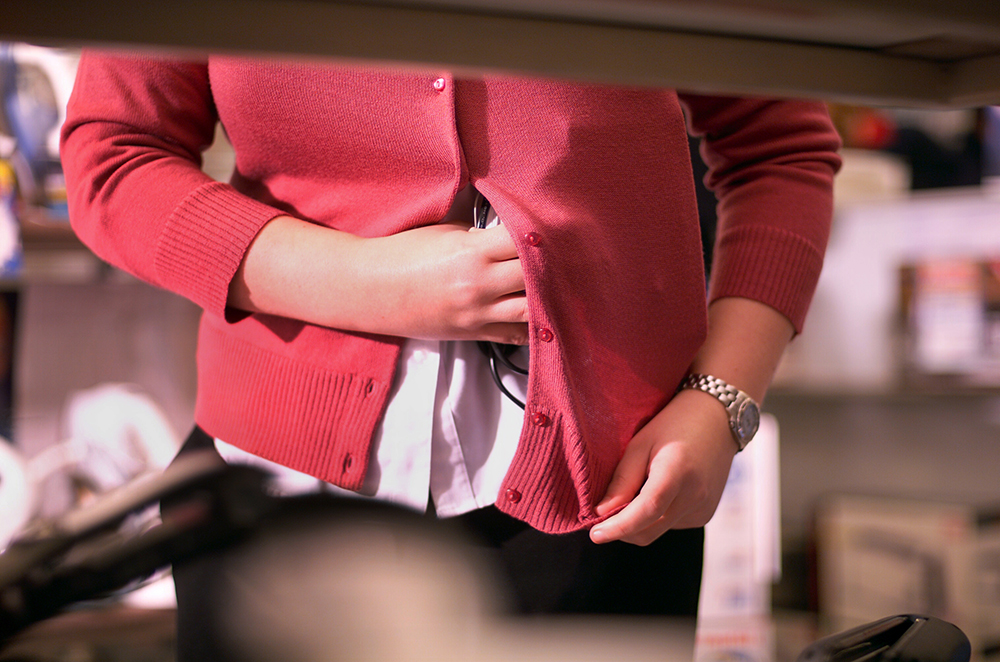The seven types of shoplifters set to cost retailers

Despite major improvements in retail security technology, shoplifting remains Australia’s largest contributor to the whopping $2.7 billion cost of national retail shrink. For merchants it’s a frustrating phenomenon that’s likely to become even more prevalent over coming weeks as we enter the retail bonanza of Christmas.
So, as retail embraces the festive season, let’s go back to the basics of retail loss prevention to uncover more about the shoplifters targeting business. Here’s a guide to understanding shoplifting and the methods used.
Know your enemy
Shoplifting is a criminal activity that spans all demographics, races, ages and backgrounds, making the task of identifying a potential thief complex for retailers.
The Australian Institute of Criminology, however, acknowledges women are more likely than men to steal, and adolescents are overly represented amongst apprehended shoplifters.
Meanwhile, they note shoplifters fall into two broad categories of rational and non-rational, with varying reasons behind their need to steal.
“While rational thieves are motivated by profit or gain, the behaviour of non-rational shoplifters may be symptomatic of psychological issues and stressors such as familial conflict or, in a small number of cases, kleptomania.”
And within those categories there are generally considered to be seven distinct groups:
The professional
The professional shoplifter steals as a living, either working alone or in small groups. This is one of the hardest shoplifters to spot but usually targets popular consumer goods with a high resale value.
Crime Prevention NSW notes professional shoplifters may case a store well in advance of a theft.
The opportunist
An amateur shoplifter, the opportunist is likely to steal something just because they can, targeting goods that aren’t secured or monitored adequately. This shoplifter may even be a regular customer, who feels entitled to a discount due to their ongoing, repeat clientele.
The impoverished
The impoverished shoplifter steals out of need, but despite their disadvantaged socio economic situation may still be hard to pick.
The drug user/addict
This shoplifter steals to feed a habit either re-selling the items they take or attempting to return them for a financial refund.
The thrill seeker
Usually egged on by a dare, the thrill seeker tends to steal on a whim and as part of a group. Teenagers often fall into this category.
The kleptomaniac
This type of shoplifter generally targets low value items and steals out of compulsion.
The absent minded
This unintentional shoplifter steals by pure mistake, and may include the elderly, and parents distracted by young children.
Key signs
Whether it’s stealing out of necessity, stealing as a profession, or stealing for the rush, rather than profiling, spotting a shoplifter generally comes down to recognising suspicious behaviour and body language.
According to Crime Prevention NSW, key clues a shoplifter may exhibit include:
- Spending more time watching the cashier or salesperson than actually shopping.
- Wearing bulky, heavy clothing during warm weather or coats when unnecessary.
- Walking with short or unnatural steps, which may indicate that they are concealing stolen items.
- Taking several items into a dressing room and only leaving with one item or none.
- The customer’s eyes are not looking at what their hands are doing; instead they are looking out for staff! So if the eyes don’t match the action…beware.
- Appearing nervous and picking up random items with no interest.
- Frequently entering store and never making a purchase.
Methods used
Distraction – Usually conducted by couples or groups, distraction involves one member of the group causing a disturbance or commandeering staff attention while others conceal and remove items from the store.
Concealing – The most common method, concealing involves secreting items in bags, prams, and clothing and leaving the store. In clothing stores it often involves a customer taking multiple items into a change room and emerging with fewer after layering the rest under their own attire.
Boosting – Boosting is a more premeditated approach to shoplifting that involves the use of purpose-built boxes/bags where items can be concealed in secret compartments. This approach may also utilise bag linings designed to interfere with older EAS systems.
Price switching – A commonly used strategy by the amateur thief, price switching involves removing a price tag from a cheaper item and affixing it to a more expensive product.
Fraudulent refunds – This method involves stealing an item and then returning it to a store in a bid to seek a refund or make a return. The store gets the item back, but loses money.
Best prevention strategies
The best loss prevention involves using multiple strategies and having a comprehensive approach product security.
It includes:
- Educating staff as to the behaviour of shoplifters and suspicious activity to watch out for.
- Electronic article surveillance to monitor stock, including advanced tags with increased magnetic strength like super lock, hyper lock and multi-polar tags.
- Regular stock takes and RFID inventory tracking to ascertain whether items are stolen and what stock is most at risk.
- Good store layout to eliminate hidden areas, and position high value stock/commonly stolen items within view of staff.
- Good customer service.
- CCTV monitoring.
- Tethered cables, lockable displays and cabinet locks.
Together, these strategies along with understanding the behaviour of shoplifters, mitigate the risk of shoplifting, allowing the retailer to concentrate on the sales rather than loss during the Christmas period.